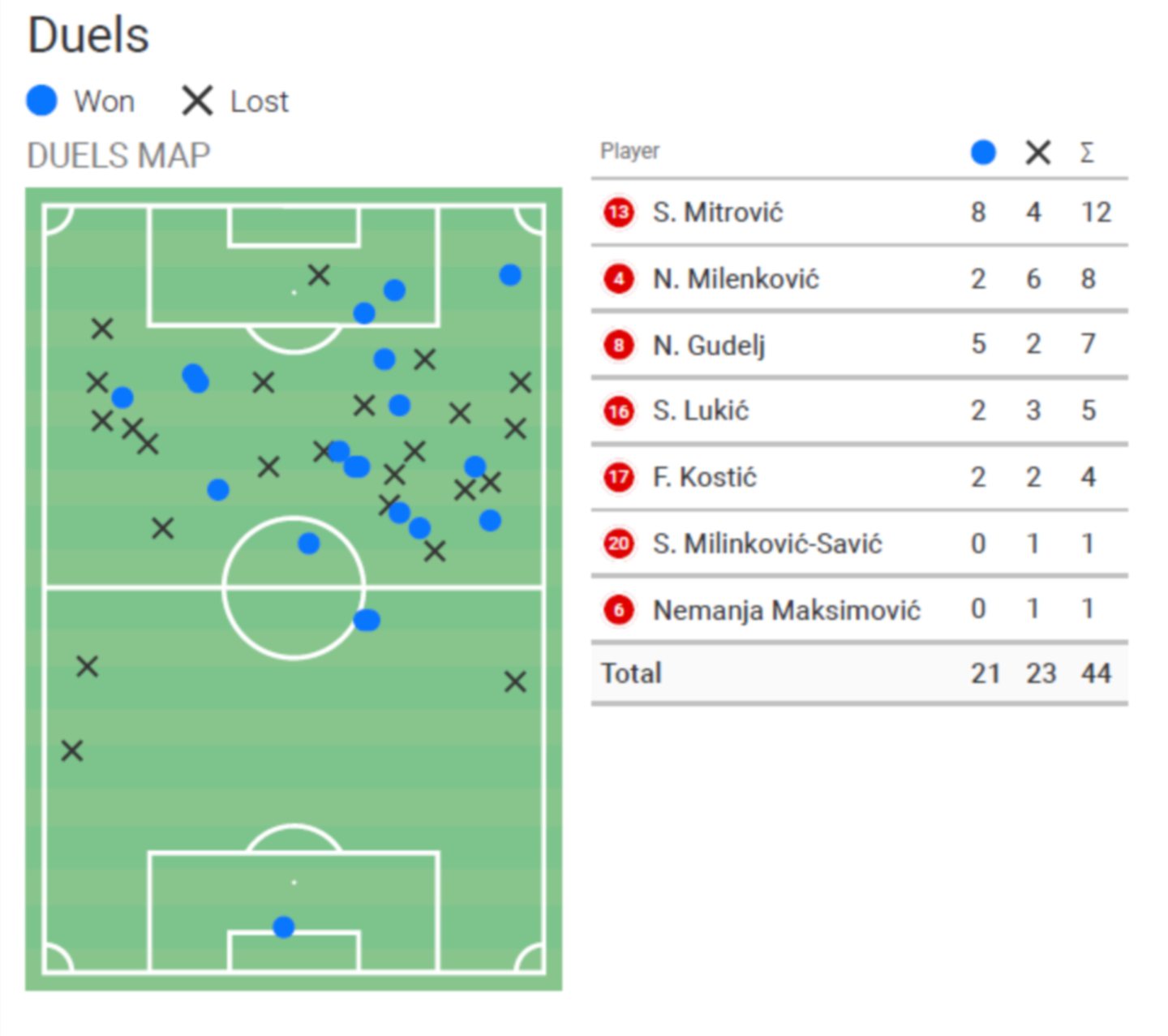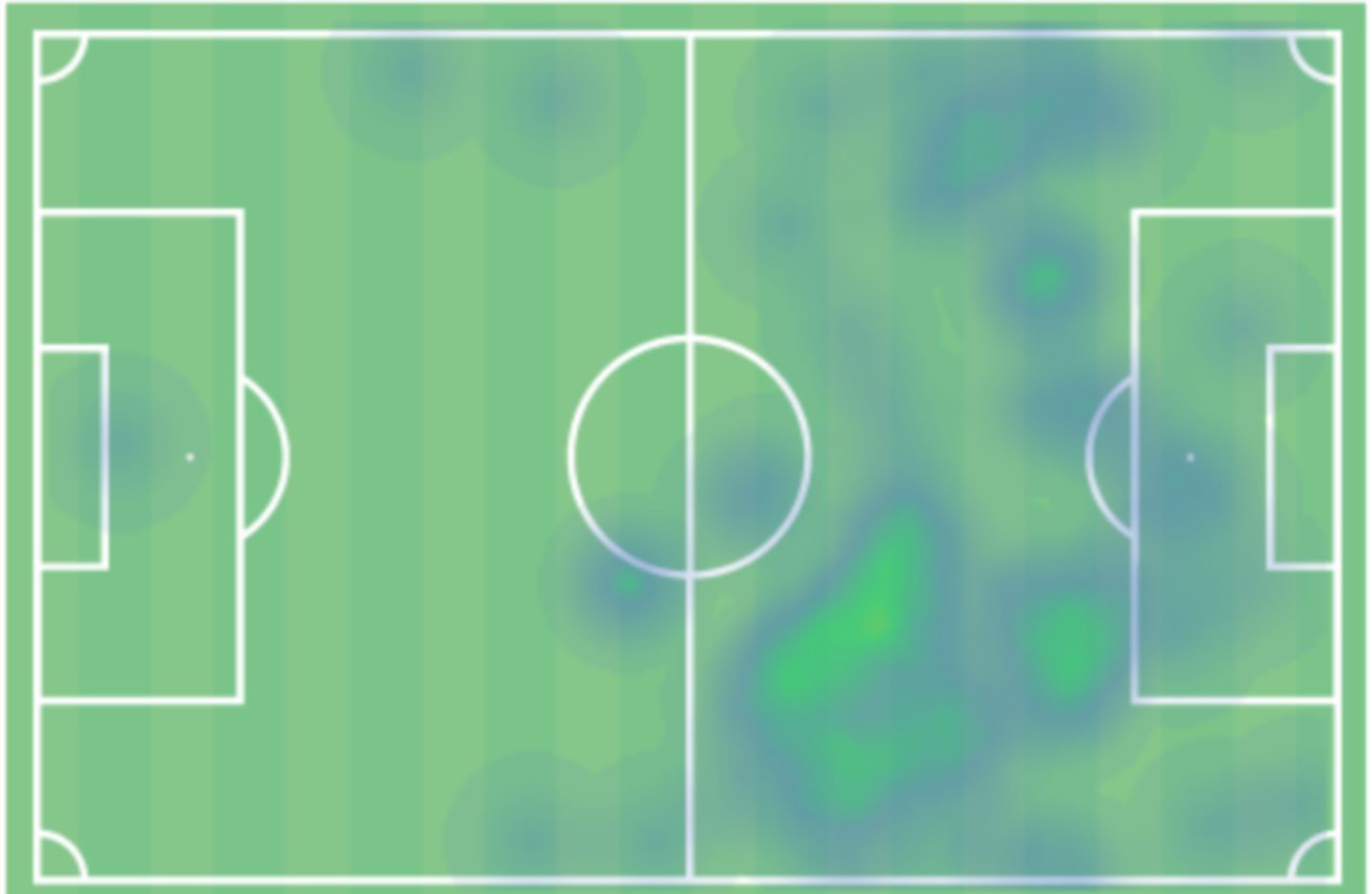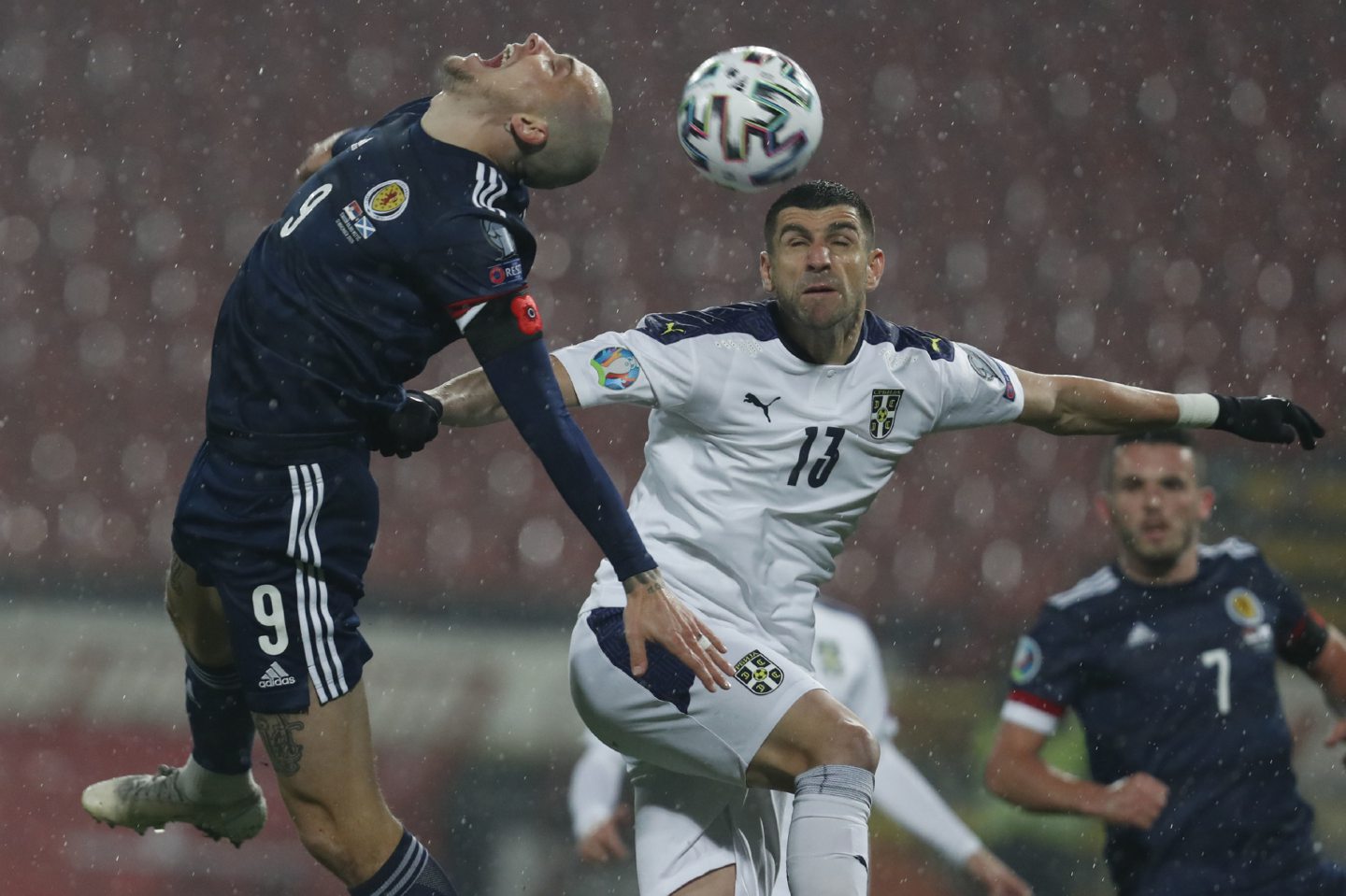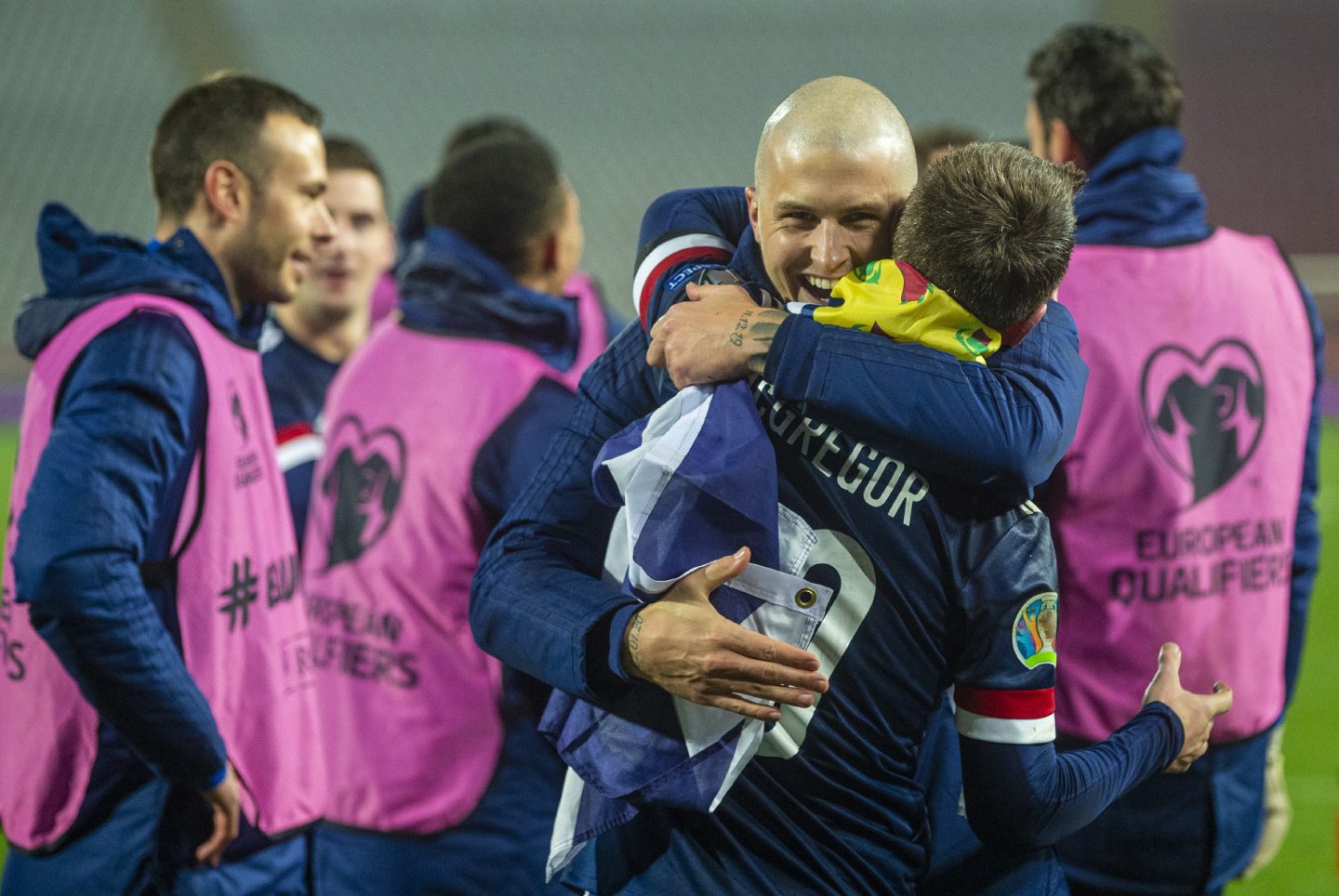Scotland required penalties to seal an historic Euros qualification after 22 years out in the cold.
David Marshall’s save from Aleksander Mitrovic meant next summer the Dark Blues will be part of a European Championships spanning 12 cities in 12 countries.
Steve Clarke’s men undeniably put fans through the wringer, conceding a goal in the final minute of normal time, having dominated proceedings in Belgrade and fully deserving of the 1-0 lead Ryan Christie had given them.
Had the game ended after the regulation 90, much more focus would be on Scotland’s fantastic display for almost 90 minutes against a Serbia side who’d beaten Norway in their play-off semi-final, and not on the dramatic shoot-out finish.
Scotland performed incredibly well to a man, but central to their performance was frontman Lyndon Dykes, who has been a revelatory find for Clarke and already has two goals in his four caps.
The Gold Coast-born combative striker leads the line superbly, dragging opposition defenders backwards, forwards, left and right. His strength and ability in the air is first class, and he allows Scotland to go long under pressure, holding the ball up and, more often than not, playing in the team-mates around him.
Last night it was, Dykes, Christie and John McGinn who linked up in a three.
Here are the numbers from Dykes’ performance across the 83 minutes he was on the pitch in Belgrade
Queens Park Rangers forward Dykes won 21 duels last night, 15 of those were in the air – 58% of the 26 aerial battles he was involved in.
12 of Dykes’ total duels came against Stefan Mitrovic, with the centre-half losing out eight times. Dykes also dominated Sevilla’s Nemanja Gudelj, winning five duels to the Serbian midfielder’s two.

Dykes also made two interceptions to win the ball back for Scotland and won one free-kick. His two crosses won a throw in and a corner.
It’s also worth nothing, even when Dykes didn’t take the ball in the air, his ability at doing so was drawing in the home defenders. It was a sparkling, all-action showing.
Take John McGinn’s great chance to get the opener of 32 minutes – Scotland’s best chance of the first half. The long ball found its way to rampaging right-back Stephen O’Donnell because several Serbia players, unsettled by his early impact, followed Dykes to halfway.
This meant there was plenty room in behind for O’Donnell to feed McGinn, who in turn didn’t quite catch his close-range effort.
Right from the start, it was clear Clarke and his players are aware of Dykes skillset. From kick-off the ball was knocked back Declan Gallagher. His immediate choice of pass: long to Dykes.
When Dykes did get his head on the ball his knockdowns were accurate, getting Scotland playing in Serbia’s half. By the 10th minute of the game, he’d nodded the ball on to McGinn three times.
Late in the first half, he also knocked a ball on to Ryan Christie with a towering header.
With the ball on the deck
Dykes isn’t a big lump. He’s a footballer who is physically commanding, yes, but he was also quick, composed and clever with the ball at his feet, completing 75% of his attempted dribbles.
Twice in the first half the striker dropped deep to give an option to Scott McTominay taking the ball out from centre-back.
On four minutes, he dodged through a sea of Serbian challenges before working it inside to Ryan Jack and, on 21 minutes, he took the ball, again from McTominay, to the edge of the Serbia area, winning a throw-in in the process.
His best contribution with the ball at his feet came after the break. He chased a lost cause down the right channel, winning the ball, before leaving two Serbia defenders for dead on the edge of the box and squaring to the onrushing Andy Robertson.
Robertson’s ballooned shot, seconds before Christie did score, should have been the first goal.
Even after the opener, he twice played Christie in.
The best of these remaining battling attacking contributions came on 56 minutes, when he held off a Serbian challenge with his back to goal and managed a flick on which Christie couldn’t quite catch on the volley.
On 77 minutes, Dykes even stretched to win a header in his own area, clearing a Serbian cross, despite being second favourite as he travelled away from the ball.
He was everywhere.
Here’s Dykes’ heatmap for the game which shows how he contributed to running the Serbian defence ragged:

It was a vintage performance from the former Livingston player and he will almost certainly be one of the first names on the Scotland team-sheet when the European Championship group games roll around in June.


